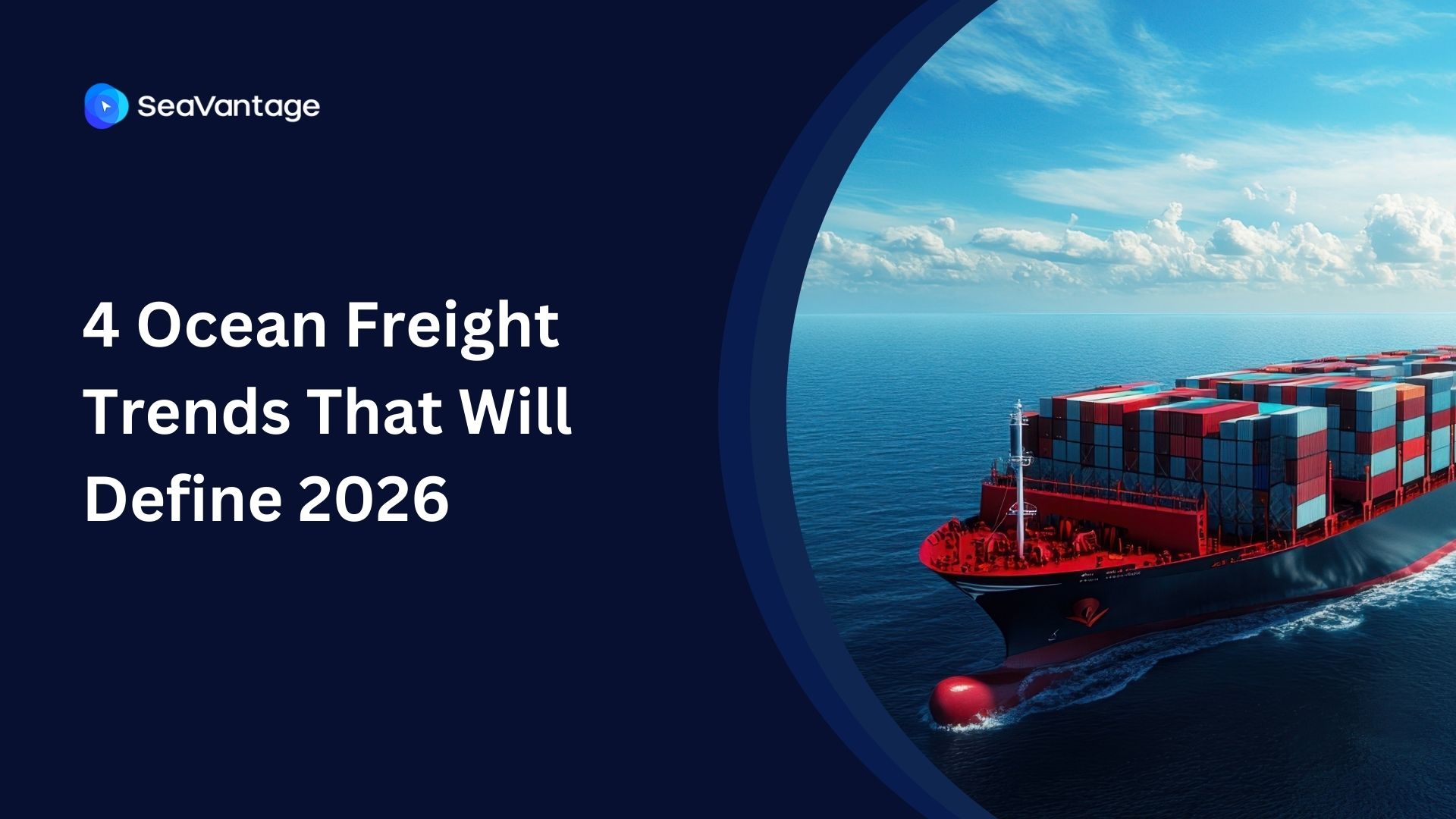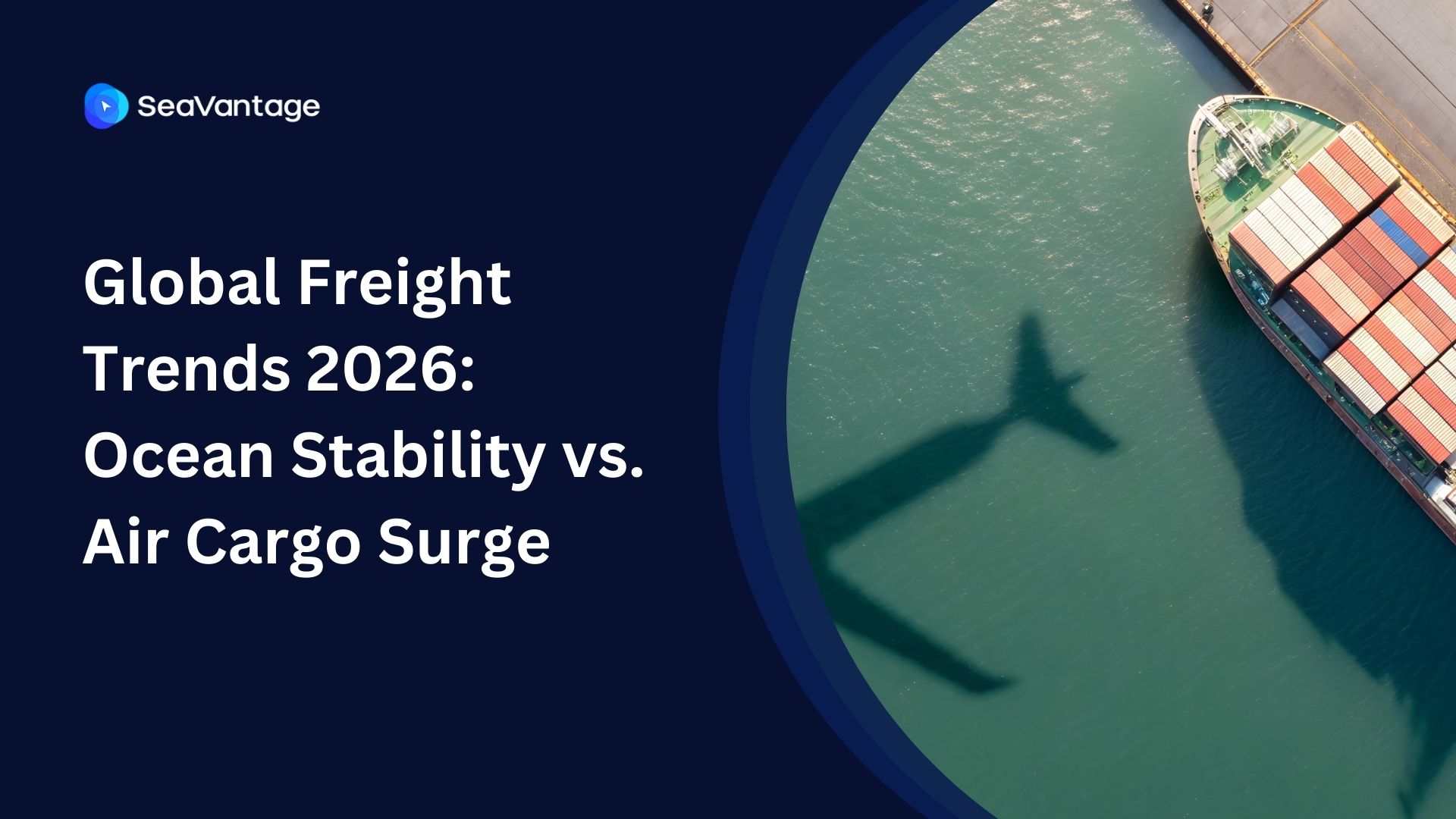2025 Guide to Tracking Shipments: From Port of Origin, Through Transshipment Ports, to Final Destination

2025 Guide to Tracking Shipments: From Port of Origin, Through Transshipment Ports, to Final Destination
Shipment tracking is the backbone of modern logistics and global trade. In an increasingly interconnected world, businesses rely on precise and real-time shipment updates to manage supply chains effectively. However, tracking a shipment across multiple ports, including transshipment hubs, can be a daunting task. Factors such as delays, communication gaps, and technological limitations often add to the complexity.
This comprehensive guide unpacks the essentials of shipment tracking, providing a step-by-step approach to monitor cargo from the port of origin through transshipment points to the final destination.
Whether you're a seasoned logistics professional or a business owner navigating the supply chain landscape, this guide will equip you with the tools and insights to streamline shipment tracking.
Understanding the Basics of Shipment Tracking
What is Shipment Tracking?
Shipment tracking is the process of monitoring cargo movement from the point of origin to the final destination. It involves obtaining real-time updates about the shipment's location, status, and estimated delivery times. Key stakeholders include shippers, carriers, consignees, and customs officials, all working to ensure the smooth flow of goods.
Key Components in Shipment Tracking:
- Port of Origin: Where the journey begins with cargo loading and initial documentation.
- Transshipment Port: Intermediate ports where goods may be transferred between vessels or modes of transport.
- Destination Port: The endpoint where cargo is unloaded and prepared for final delivery.
Tracking is integral for mitigating risks such as delays, damage, or misplacement during transit.
The Role of Ports in the Shipment Process
Port of Origin:
The port of origin plays a critical role in shipment tracking. It is where cargo is loaded, inspected, and documentation is finalized. Proper coordination here ensures accurate departure records and smooth tracking throughout the journey.
Transshipment Ports:
Transshipment ports are intermediate hubs where cargo is transferred between ships or transport modes to reach its final destination. For instance, a shipment from Asia to South America may transit through a major hub like Singapore. Transshipment allows for cost and time optimization, but it can also introduce risks such as delays or re-handling damage.
Destination Port:
At the destination port, cargo is unloaded, goes through customs clearance, and is prepared for final delivery. Tracking the shipment until it leaves the port ensures accurate timing for last-mile logistics.
Tools and Technologies for Shipment Tracking
Tracking Systems:
Modern tracking systems offer unprecedented visibility into shipment movements. GPS-enabled devices allow real-time location monitoring, while online platforms provide detailed status updates accessible via web portals or mobile apps.
Key Technologies:
- Internet of Things (IoT): IoT sensors track temperature, humidity, and other conditions in real-time, ensuring cargo integrity.
- Blockchain: Ensures secure and transparent tracking by creating tamper-proof records of shipment events.
- Artificial Intelligence (AI): Predicts optimal routes and foresees potential delays to improve efficiency.
Popular Platforms and Solutions:
Leading logistics providers, such as Maersk, DHL, and SeaVantage, offer sophisticated tracking platforms that integrate IoT, GPS, and blockchain for end-to-end visibility.
Step-by-Step Guide to Tracking Your Shipment
Step 1: Obtain Tracking Details
Start with your Bill of Lading (BoL) or tracking number provided by the carrier or logistics partner. This unique identifier unlocks access to all shipment updates.
Step 2: Use the Carrier’s Online Tools
Log into the carrier's portal to track the shipment. For example, Maersk’s online platform displays real-time status, transit routes, and estimated delivery dates.
Step 3: Monitor Transshipment Ports
Tracking becomes more complex at transshipment hubs. Keep an eye on transit updates as delays or rerouting can occur due to weather, port congestion, or operational constraints.
Step 4: Confirm Arrival at Destination Port
Verify that the cargo has reached the destination port and cleared customs. Be proactive in coordinating with local logistics teams for smooth last-mile delivery.
Common Challenges in Shipment Tracking and How to Overcome Them
Frequent Issues:
- Delays at Transshipment Ports: Weather or logistical bottlenecks often cause hold-ups.
- Inaccurate Tracking Data: Outdated or incorrect updates can mislead stakeholders.
- Communication Gaps: Lack of timely communication between parties results in confusion.
Solutions:
- Use real-time tracking tools to stay updated.
- Establish clear communication channels with carriers and logistics partners.
- Prepare contingency plans, such as alternative routes or carriers, in case of disruptions.
Case Studies or Examples
Example 1: Leveraging Advanced Tools for Seamless Tracking
A retail company shipping electronics from China to Europe used GPS-enabled IoT devices to monitor real-time temperature and location data. Despite delays at the transshipment hub in Singapore, proactive communication ensured timely delivery.
Example 2: Mitigating Delays at a Transshipment Port
A food and beverage company faced delays at a Middle Eastern transshipment port due to congestion. By engaging with their logistics provider and rerouting the shipment, they minimized disruption and ensured product freshness.
Best Practices for Efficient Shipment Tracking
- Maintain Accurate Records: Keep shipment details updated, including BoL and tracking numbers.
- Choose Reliable Partners: Work with established carriers and logistics providers.
- Stay Informed: Understand specific challenges at key ports along your shipment’s route.
Conclusion
Shipment tracking is a critical aspect of modern supply chains, ensuring goods move efficiently and securely from the port of origin, through transshipment ports, to the final destination. By leveraging advanced technologies, proactive communication, and reliable logistics partners, businesses can optimize their operations and overcome tracking challenges.
Explore SeaVantage’s cutting-edge solutions for shipment tracking and ensure your cargo’s safety and timely delivery. Contact Us.
2025년 9월, 주요 글로벌 항만에서 어떤 운송사가 가장 긴 선박 체류 시간을 기록했는지 확인해보세요. 트렌드를 비교하고, 지연을 파악하며, 전체 항만 데이터를 통해 운송 전략을 최적화할 수 있습니다.
2025년 8월, 주요 글로벌 항만에서 어떤 운송사가 가장 긴 선박 체류 시간을 기록했는지 확인해보세요. 트렌드를 비교하고, 지연을 파악하며, 전체 항만 데이터를 통해 운송 전략을 최적화할 수 있습니다.
2025년 7월, 주요 글로벌 항만에서 어떤 운송사가 가장 긴 선박 체류 시간을 기록했는지 확인해보세요. 트렌드를 비교하고, 지연을 파악하며, 전체 항만 데이터를 통해 운송 전략을 최적화할 수 있습니다.
iscover the 4 critical ocean freight trends for 2026, from the Red Sea reopening and fleet overcapacity to shifting global trade maps. Prepare your supply chain now.
Discover key 2026 freight market trends: Port of Houston expansion, air cargo "super peak," and ocean freight stability. Plan your supply chain with SeaVantage.
Explore November 2025 global port dwell time data. See which ports and carriers led in efficiency across Antwerp, Busan, Long Beach, Rotterdam, and Singapore.



.svg)





.jpg)

.png)